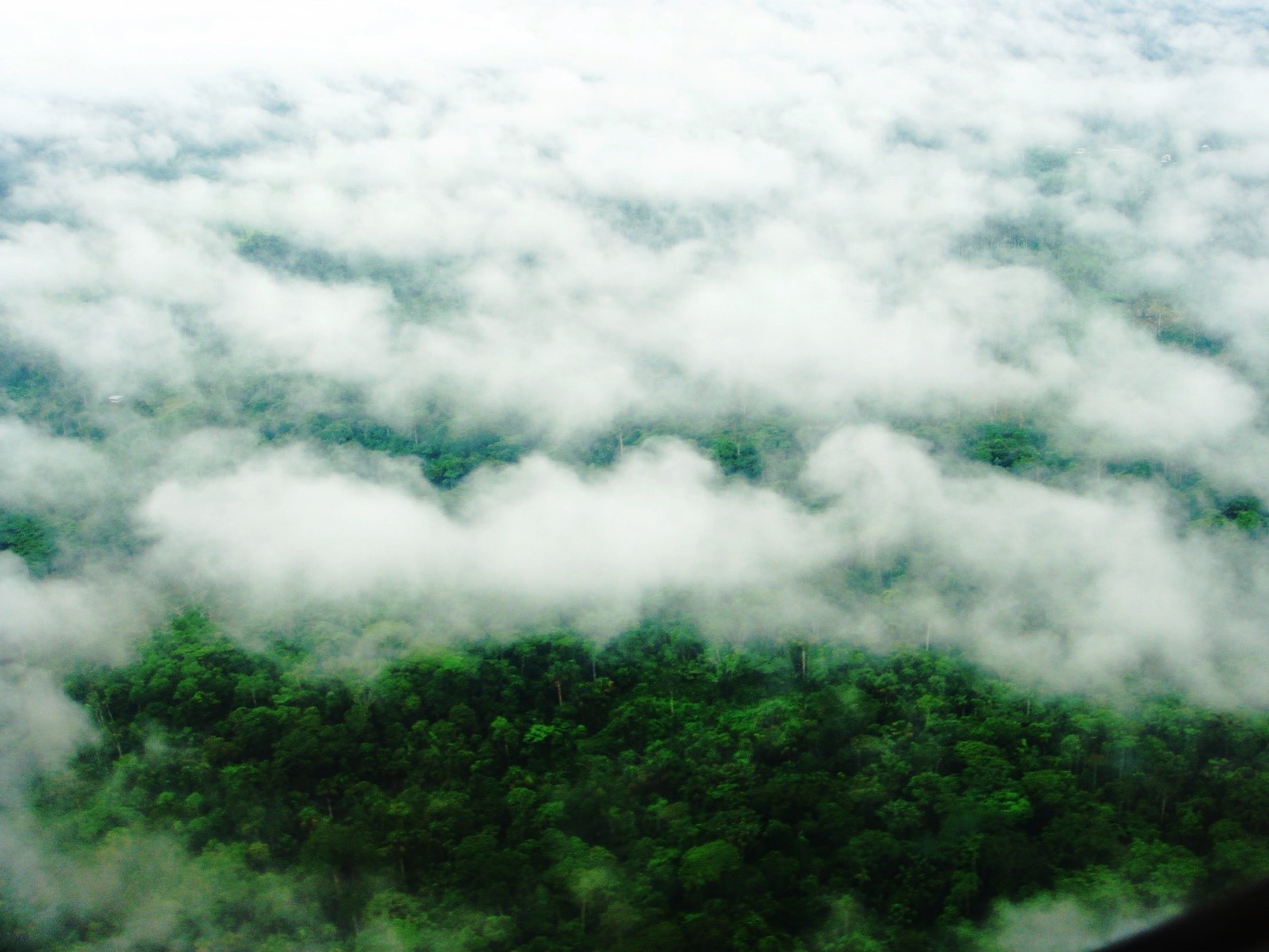The water content of organic aerosol predicts its viscosity
Submitter
Shrivastava, Manishkumar — Pacific Northwest National Laboratory
Area of research
Aerosol Processes
Journal Reference
Science
Small organic aerosols (OA) are mixtures of thousands of species produced from natural biogenic, anthropogenic, or biomass burning sources. The viscosity of OA determines its phase in the atmosphere. Directly measuring the viscosity of fine particulate OA in the atmosphere is challenging. To determine which parameters could accurately predict the viscosity of OA, researchers implemented a well-defined relationship between OA composition, volatility, and water content into the Weather Research and Forecasting Model coupled to chemistry (WRF-Chem) and simulated the variations in OA viscosity over the Amazon rainforest. By analyzing WRF-Chem-simulated variations in OA viscosity throughout the atmospheric column over the Amazon, they determined that water associated with OA shows a strong logarithmic-linear relationship with OA viscosity.
Impact
OA water content depends on easily measurable parameters: ambient relative humidity and OA hygroscopicity. The researchers found that this water content can be used to predict the OA phase state and viscosity in field studies that do not measure viscosity. OA viscosity affects the lifetime of particles in the atmosphere. Predicting the variations of OA viscosity in time and space is also important for understanding how ultrafine particles grow to sizes at which they seed clouds. It enhances our understanding of the ability of these particles to scatter/absorb sunlight. The effect of fine OA particles on clouds and sunlight is one of the least understood aspects of climate systems.
Summary
In this work, researchers incorporated a well-defined relationship between the volatility and viscosity of OA particles within the WRF-Chem regional model. They simulated the phase state and viscosity of OA particles in the Amazon rainforest during the dry-to-wet transition season (September–October). Their results show that water associated with OA is a governing factor that explains variations in OA viscosity over several orders of magnitude. At high altitudes with low relative humidity (RH) and temperatures, the simulations indicate that OA exists in a semi-solid/solid-like phase state. Near the surface, OA mostly exists in a liquid-like state due to high RH. At an urban site near the surface, where the day-night RH differences are significant, RH drives the phase state. In contrast, at a background forested site with small day-night RH differences, biomass burning influenced-OA exists as a semi-solid. This work develops a new capability in WRF-Chem to predict variations in the phase state of OA. The capability will be critical for predicting the atmospheric formation and removal of climate-relevant OA particles as well as their interactions with clouds and sunlight in future studies.


